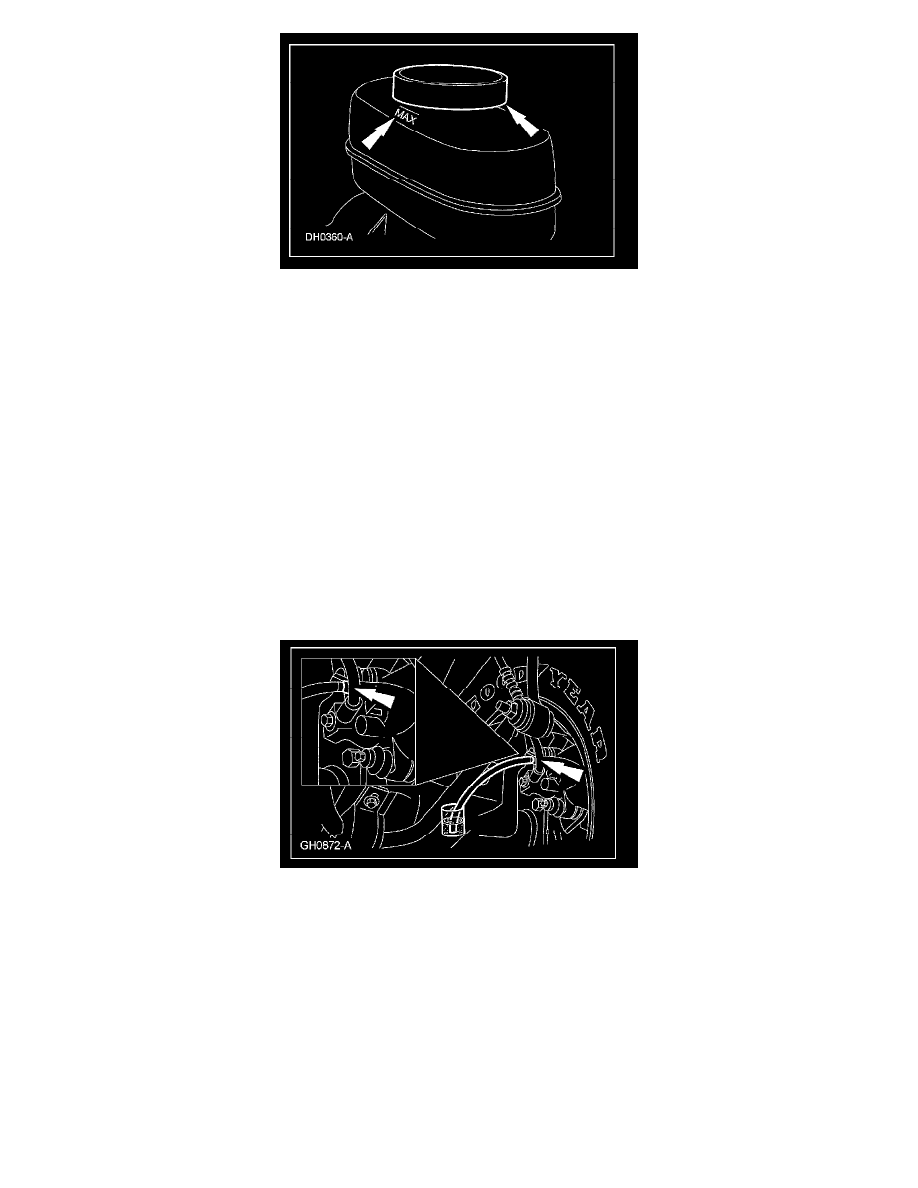Town Car V8-4.6L (2008)

2. NOTE: Master cylinder pressure bleeder adapter tools are available from various manufacturers of pressure bleeding equipment. Follow the
instructions of the manufacturer when installing the adapter.
Install the bleeder adapter to the brake master cylinder reservoir and attach the bleeder tank hose to the fitting on the adapter.
^
Refill the brake master cylinder reservoir with clean, specified brake fluid as necessary.
Vehicles not equipped with traction control
3. Place a box-end wrench on the master cylinder bleeder screw. Attach a rubber drain hose to the bleeder screw and submerge the free end of the
hose in a container partially filled with clean, specified brake fluid.
4. Open the valve on the bleeder tank.
5. Loosen the bleeder screw and leave open until clear, bubble-free brake fluid flows into the container.
^
Tighten the master cylinder bleeder screw to 13 Nm (10 lb-ft) and remove the rubber hose.
All vehicles
6. NOTE: Bleed from the longest to the shortest brake line. Make sure the bleeder tank contains enough clean, specified brake fluid to complete the
bleeding operation.
Remove the brake caliper bleeder screw cap and place a box-end wrench on the bleeder screw. Attach a rubber drain hose to the brake caliper
bleeder screw, and submerge the free end of the hose in a container partially filled with clean, specified brake fluid.
7. NOTE: Have an assistant press the brake pedal approximately 25 mm (0.98 in) once every 2 seconds while pressure bleeding. This will enhance
the pressure bleeding procedure.
Loosen the bleeder screw and leave open until clear, bubble-free brake fluid flows into the container. Wait 15 seconds after clear, bubble-free fluid
flows through the rubber hose.
8. Tighten the brake caliper bleeder screw to 21 Nm (15 lb-ft), remove the rubber hose and install the bleeder screw cap.
9. Continue bleeding the brake system repeating Steps 7 through 9 at all wheel ends.
10. Close the bleeder tank valve. Remove the tank hose from the adapter and remove the adapter.
11. Inspect the brake fluid level in the master cylinder reservoir.
^
Fill the brake master cylinder reservoir with clean, specified brake fluid if necessary.
12. Install the reservoir cap.
13. NOTE: If the brake pedal remains spongy, air may be trapped in the HCU.
If the brake pedal remains spongy after pressure bleeding, carry out the ABS Hydraulic Control Unit (HCU) Bleeding procedure with the scan
